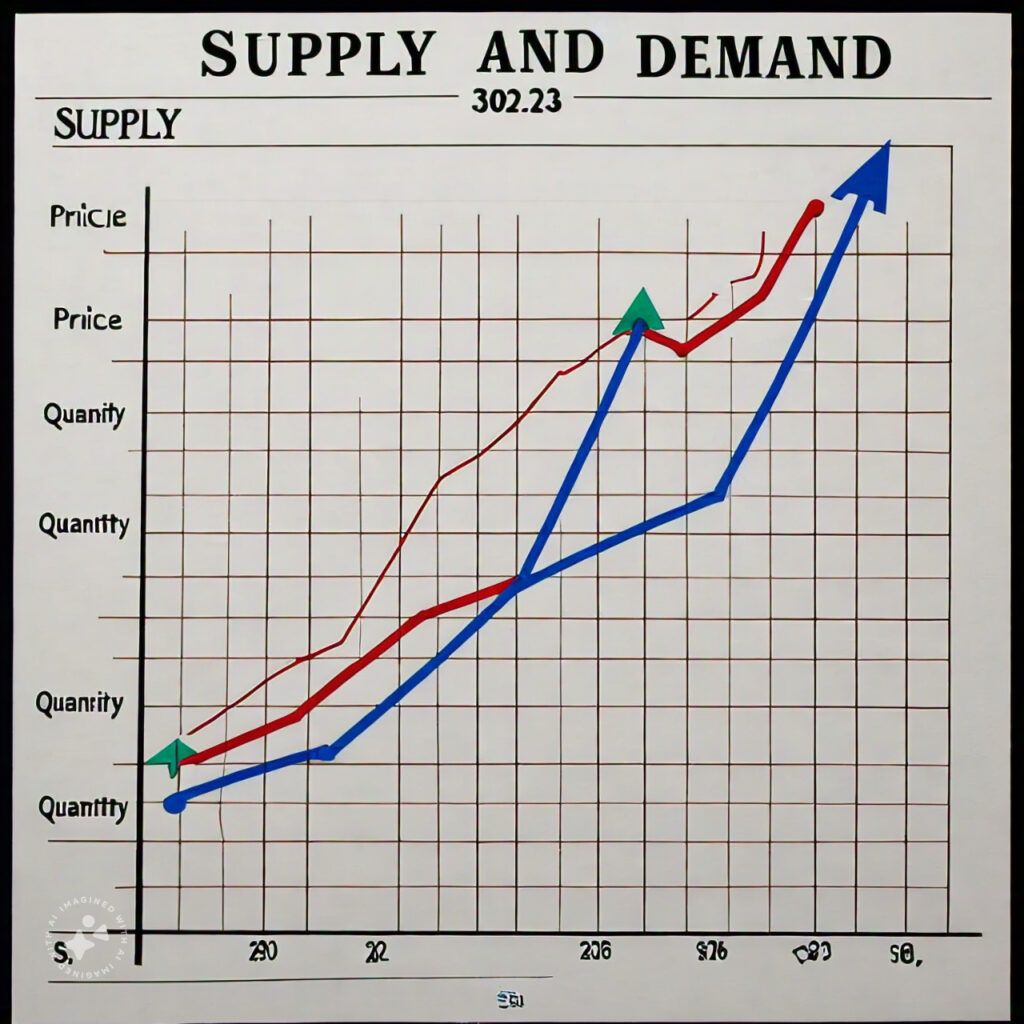Trade imbalances, which occur when a country’s imports significantly exceed its exports or vice versa, can have profound effects on global market conditions. For international trade professionals, understanding these dynamics is crucial for navigating today’s volatile economic landscape. The current global economic environment is shaped by a multitude of factors, including shifting trade patterns, fluctuating currency exchange rates, geopolitical tensions, and the ongoing impacts of climate change.
In 2024, global trade dynamics are being influenced by several key trends. A notable trend is the receding of trade imbalances among some of the world’s largest economies, partly driven by tight monetary policies and fluctuating energy prices. The U.S. dollar has remained strong, affecting trade flows and the balance of payments globally. Meanwhile, trade with emerging markets, particularly in Asia and Africa, continues to grow, underscoring the shifting centers of global trade power. However, Western economies have experienced declines in trade with major partners like China, reflecting broader geopolitical and economic challenges(IMF,China Briefing).
The international trade landscape is further complicated by protectionist policies, disrupted supply chains, and trade wars, which continue to create uncertainty. Trade professionals must also consider the potential long-term effects of these developments on exchange rates, inflation, and industrial competitiveness. Understanding these complex interrelations is essential for devising strategies that mitigate risks and capitalize on emerging opportunities(UNCTAD).
The Impact of Trade Imbalances on Currency Exchange Rates
How Trade Imbalances Affect Currency Values
Trade imbalances can significantly influence currency values by altering the supply and demand for a country’s currency on the global market. When a country has a trade deficit—meaning it imports more than it exports—it generally results in higher demand for foreign currencies, as more of the local currency is sold to purchase foreign goods and services. This increased supply of the local currency can lead to depreciation. Conversely, a trade surplus—where exports exceed imports—often increases demand for the local currency, as foreign buyers convert their currency to purchase the surplus goods, potentially leading to currency appreciation (UNCTAD,China Briefing).
Recent global trade patterns exemplify these effects. For instance, China’s trade with Western economies has seen a decline in 2024, leading to a nuanced impact on currency exchange rates. The Chinese yuan faced depreciation pressures as trade surpluses with certain regions contracted, causing shifts in currency market dynamics. Meanwhile, China’s robust trade expansion with ASEAN and Latin American countries has helped stabilize the yuan against other currencies, mitigating some of the depreciation pressures(China Briefing).

Implications for International Trade
Fluctuating currency values due to trade imbalances have significant implications for international trade professionals. A depreciating currency can make a country’s exports cheaper and more competitive abroad, potentially boosting export volumes. However, it also raises the cost of imports, leading to inflationary pressures and increased costs for businesses relying on foreign goods or raw materials (IMF).
For example, a depreciating Chinese yuan can benefit Chinese exporters by making their products cheaper in foreign markets. However, it simultaneously increases the cost of imported goods and components, which could affect industries heavily reliant on imports, such as technology and manufacturing. In the context of U.S.-China trade dynamics, the slight stability in trade despite these currency fluctuations indicates a complex interplay between currency value adjustments and market demand (UNCTAD,China Briefing).
International trade professionals must closely monitor these currency fluctuations as they affect not only pricing strategies and competitiveness but also the broader economic health of trading partners. Hedging strategies, diversification of sourcing and markets, and strategic pricing adjustments are critical tools that businesses can use to mitigate risks associated with currency volatility driven by trade imbalances.
Influence on Demand and Supply Conditions
Demand-Side Implications of Trade Imbalances
Trade imbalances can have a significant impact on both domestic and international demand for goods and services. When a country experiences a trade deficit, it is importing more than it exports, which can lead to an increase in consumer demand for foreign goods. This scenario often results in a shift in domestic market preferences toward imported products, potentially reducing the demand for locally produced goods. Additionally, the influx of cheaper foreign goods due to a trade deficit can create competitive pressures on domestic industries, affecting their pricing strategies and market share(IMF,China Briefing).
For instance, the United States, which has been running a persistent trade deficit with China, continues to see strong consumer demand for Chinese electronics, machinery, and textiles. This demand has been somewhat insulated from the impacts of trade wars and regulatory changes, demonstrating the depth of consumer preferences and the integrated nature of supply chains (China Briefing). However, this can also mean reduced demand for equivalent domestic goods, leading to challenges for local manufacturers in terms of maintaining profitability and competitiveness.
Supply-Side Considerations
On the supply side, trade imbalances can lead to disruptions in the availability and pricing of goods. A country with a trade surplus, for example, is exporting more than it imports, which can lead to domestic shortages of certain goods and raw materials that are heavily exported. This might drive up prices domestically, affecting industries that rely on these inputs. Conversely, countries experiencing a trade deficit might see an oversupply of certain foreign goods, potentially driving down prices and putting local producers at a disadvantage(UNCTAD,IMF).
A notable example of supply-side implications is seen in the technology sector, where trade imbalances between the U.S. and China have affected the availability of critical components like semiconductors. The trade tensions and subsequent imbalances have led to disruptions in the supply chain, causing shortages and increased costs for technology manufacturers worldwide. This not only impacts the production capabilities of tech companies but also influences the pricing of end products for consumers (IMF,China Briefing).
Furthermore, trade imbalances can affect global supply chains, particularly in industries that are heavily dependent on imported raw materials. For example, countries with significant trade deficits in commodities may face higher import costs, affecting industries such as manufacturing and energy production. These industries may then experience increased production costs, which can reduce profit margins and potentially lead to higher prices for consumers(UNCTAD).

Competitiveness of Industries Affected by Trade Imbalances
Trade Imbalances and Industry Competitiveness
Trade imbalances can significantly influence the competitiveness of various industries, both domestically and internationally. When a country experiences a trade deficit, local industries may face stiffer competition from imported goods. This is particularly true in sectors where imported products are cheaper or perceived as higher quality, leading to a decline in market share for domestic producers.
For instance, the U.S. automotive industry has been affected by trade imbalances with countries like Japan and Germany, where imports of high-quality vehicles have captured a substantial portion of the U.S. market. This has forced American car manufacturers to innovate and improve their product offerings to remain competitive. Similarly, the European Union’s trade deficit with China in consumer electronics has impacted local manufacturers, prompting them to enhance technological capabilities and reduce costs to compete effectively (IMF, China Briefing).
In contrast, countries with trade surpluses often see their industries becoming more competitive internationally. For example, China’s trade surplus in manufactured goods has enabled its industries to expand their global market share. The competitive pricing of Chinese products, driven by lower production costs and economies of scale, has made Chinese goods more attractive in international markets. This has been evident in sectors such as electronics, machinery, and textiles, where Chinese manufacturers have become dominant players on the global stage (China Briefing).
Strategic Responses to Maintain Competitiveness
To maintain competitiveness in the face of trade imbalances, industries and companies must adopt strategic responses tailored to their specific challenges. Companies operating in countries with trade deficits can focus on enhancing their product differentiation, improving quality, and leveraging innovation to distinguish themselves from cheaper imported goods. This approach can help them capture a niche market segment that values quality over cost.
Moreover, businesses can invest in automation and other cost-reduction strategies to lower production costs, allowing them to offer competitive pricing without sacrificing profit margins. For example, U.S. manufacturing firms have increasingly adopted advanced manufacturing technologies such as robotics and artificial intelligence to enhance productivity and reduce labor costs, making them more competitive against foreign imports (IMF).
Industries in countries with trade surpluses, like China, can capitalize on their position by investing in further expansion into new markets. Diversifying export markets reduces dependence on any single region, mitigating the risks associated with economic downturns or trade disputes in specific areas. Additionally, focusing on high-value-added products and services can enhance the resilience of these industries against global market fluctuations (China Briefing).
Analyzing Market Dynamics: Practical Tools and Methods
Data Sources for Monitoring Trade Imbalances
To effectively analyze market dynamics influenced by trade imbalances, international trade professionals must rely on robust data sources. These sources provide critical insights into trade flows, currency movements, and economic conditions across different regions. Key data sources include:
- International Monetary Fund (IMF): The IMF offers comprehensive data on global trade balances, including detailed reports on the current account, capital flows, and exchange rates. The IMF’s World Economic Outlook and Global Financial Stability reports are essential for understanding the macroeconomic factors that drive trade imbalances and their impact on market conditions(China Briefing).
- World Trade Organization (WTO): The WTO provides trade statistics and analysis that cover trade in goods and services by country and region. This data is crucial for identifying trends in trade flows and understanding how trade policies and agreements influence imbalances. The WTO’s Trade Monitoring Reports offer insights into recent changes in trade policies that could impact global trade dynamics(IMF).
- National Statistical Agencies: For detailed, country-specific data, trade professionals can look to national statistical agencies such as the U.S. Bureau of Economic Analysis (BEA), Eurostat, and China’s General Administration of Customs. These agencies provide granular data on imports, exports, and trade balances by commodity, industry, and trading partner, allowing for in-depth market analysis(China Briefing).
- Private Sector Databases: Firms like IHS Markit and Bloomberg provide subscription-based services offering detailed trade data, economic forecasts, and real-time market analysis tools. These databases are valuable for professionals needing up-to-date information on global trade conditions and forecasts for strategic planning purposes(UNCTAD).
Techniques for Market Analysis
Analyzing the impact of trade imbalances on market dynamics requires a combination of quantitative and qualitative methods. Some effective techniques include:
- Trend Analysis: This method involves analyzing historical data to identify patterns and trends in trade balances, currency movements, and economic indicators. By understanding past trends, professionals can better anticipate future market conditions and adjust their strategies accordingly. For example, analyzing the trend of a country’s trade deficit or surplus over time can provide insights into its economic health and potential currency movements(UNCTAD).
- Econometric Modeling: Econometric models use statistical techniques to quantify the relationships between trade imbalances and other economic variables, such as GDP growth, inflation, and exchange rates. These models help predict how changes in trade balances could affect broader economic conditions and provide a data-driven basis for strategic decision-making(IMF).
- Scenario Planning: Given the uncertainties in global trade, scenario planning allows trade professionals to explore different future scenarios based on varying assumptions about trade policies, geopolitical developments, and economic trends. This approach helps prepare for multiple outcomes, such as shifts in trade agreements or sudden changes in global demand(China Briefing).

Strategic Implications for International Trade Professionals
Embracing Technology and Innovation
Innovation and technology play a pivotal role in helping companies adapt to and capitalize on the complexities introduced by trade imbalances.
- Digital Trade Platforms: Utilizing digital trade platforms can enhance transparency and efficiency in global supply chains. These platforms enable real-time tracking of shipments, streamline customs procedures, and facilitate communication with suppliers and customers across borders. By leveraging technology, companies can better manage the risks associated with trade imbalances and ensure smoother operations(IMF).
- Advanced Analytics for Predictive Insights: Employing advanced analytics and artificial intelligence can provide predictive insights into trade flows, currency movements, and market demand. This enables trade professionals to anticipate changes in market dynamics and adjust their strategies proactively. For example, machine learning models can predict potential trade barriers or supply chain disruptions, allowing businesses to prepare accordingly(UNCTAD).
- Innovation in Product Development: Innovating in product development to meet local market needs can also mitigate the effects of trade imbalances. By customizing products for different regions, companies can enhance their competitiveness and reduce the impact of trade fluctuations. For example, tailoring product specifications to local preferences and regulatory requirements can help capture greater market share and reduce dependency on any single market(China Briefing).
Long-Term Strategic Planning
Long-term planning is essential for navigating the challenges posed by trade imbalances and sustaining growth in global markets.
- Investing in Local Production: Establishing or expanding local production facilities in key markets can reduce dependency on imports and shield companies from currency fluctuations and trade barriers. Local production allows for more responsive supply chains and can enhance a company’s ability to adapt to changing market conditions. For example, investing in manufacturing capabilities within the EU or ASEAN countries can help firms better serve these markets despite potential trade imbalances(UNCTAD).
- Building Strategic Alliances: Forming strategic alliances and partnerships with local firms can also provide a buffer against trade imbalances. These partnerships can facilitate market entry, improve access to local knowledge, and enhance a company’s ability to respond to regulatory changes and market shifts. Collaborating with local companies can also lead to joint innovation efforts, further enhancing competitiveness(China Briefing).
Conclusion
Trade imbalances are a critical factor shaping global market conditions, influencing everything from currency exchange rates to the competitiveness of industries and the dynamics of supply and demand. For international trade professionals, understanding these imbalances is essential for navigating an increasingly complex and interconnected global economy.
As we have explored, trade imbalances can lead to significant fluctuations in currency values, which in turn affect import and export prices and the overall economic stability of countries. These imbalances also have profound effects on demand and supply conditions, often resulting in competitive pressures on local industries and shifts in market dynamics. Moreover, industries affected by trade imbalances must continuously adapt to maintain competitiveness, whether by innovating, diversifying markets, or leveraging new technologies.
Analyzing market dynamics effectively requires a deep understanding of both quantitative data and qualitative trends. By utilizing a combination of data sources, econometric modeling, scenario planning, and advanced analytics, trade professionals can gain a comprehensive view of the global market landscape. These tools and methods enable them to anticipate shifts, mitigate risks, and identify new opportunities arising from trade imbalances.






